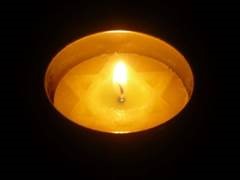Everyone Counts: What Parshat Bamidbar & Pride Month Teach Us About Sacred Belonging
Words of Wisdom with Rabbi Efrat Zarren-Zohar
This Dvar Torah was written by Mark Kravitz, Chair of the Board of CAJE–Miami: The Center for the Advancement of Jewish Education. He serves on the Executive Board of The Jewish Education Project. He is a passionate advocate for inclusive Jewish learning, Israel education, and a vibrant, resilient Jewish future.


Dedicated in memory of Yosef Yisroel Rosenberg, Rabbi Efrat Zarren-Zohar’s father-in-law, who passed away on Tuesday, May 26th.
We extend our heartfelt condolences to the entire family. May his memory be a blessing.
Donations in his memory may be made here.
As we step into the month of June — Pride Month — the Jewish calendar hands us Parshat Bamidbar, the first Torah portion in the Book of Numbers.
And yes, it opens with… a census. It’s the spiritual equivalent of a divine Excel spreadsheet: rows, columns, names, tribes, tallies.
Not exactly the kind of Torah portion that screams, “Celebrate queerness!”
And yet — Bamidbar may be exactly what we need this month.
Because buried within its orderly accounting is a message that’s anything but bureaucratic.
Rashi, our ever-astute medieval commentator, tells us that God commanded the census not for logistics, but for love.
Like a parent counting their children each night just to be sure everyone is safe, God says: “You matter. You belong. I see you.”
This wasn’t a headcount. It was a heart-count.
And in a world where so many LGBTQ+ Jews have been made to feel invisible, conditional, or dispensable — the Torah opens this book with a bold counter-message: You count. You’re not extra. You’re essential.
Of course, it’s easy to look at Bamidbar and notice what’s not there: no mention of gender fluidity, nontraditional families, or queer identities.
The census focuses on men over twenty who can bear arms. But if we stop there, we miss the Torah’s deeper invitation.
Because where does this portion take place? In the wilderness — the midbar. The in-between. The unknown.
It’s a liminal space, where the Israelites are no longer slaves but not yet settlers. They’re figuring out who they are.
If you’ve ever felt “in-between” — between labels, between communities, between who you were and who you’re becoming — then Bamidbar is your Torah portion.
Because that’s where transformation happens. Not in palaces, but in the messy holiness of the wilderness.
And this year, we know that wilderness all too well.
Since October 7th, we’ve been living in our own midbar. A shaken Jewish world, trying to make sense of a new reality.
We’ve felt grief, fear, anger — and a desperate need for clarity.
In this wilderness, we could easily tighten our circles, narrow our definitions of who “counts.” But the Torah urges us to do the opposite. To open the circle wider.
Here in Miami, CAJE: The Center for the Advancement of Jewish Education lives that truth every day.
CAJE’s mission is to ensure that every Jew, at every age and every stage, has access to deep, joyful, meaningful Jewish learning.
Whether you’re an early childhood student singing Hebrew songs, a teen grappling with Israel, a parent exploring Jewish identity, or an adult wrestling with God — CAJE is there.
And CAJE understands something sacred: that education isn’t just about transmitting knowledge. It’s about affirming souls.
It’s about helping every Jewish student — including LGBTQ+ students and families — see themselves in the story.
This is more than inclusion. Inclusion implies we’re being nice.
This is belonging. This is covenant. This is Torah.
As Rabbi Steve Greenberg — the first openly gay Orthodox rabbi — once said: “The Torah begins with something more basic than law: the idea of dignity.”
And the Talmud reminds us in Berachot 58a that just as no two faces are alike, no two souls are alike. That’s not a liability — it’s a feature of the divine blueprint.
So what does Jewish Pride look like?
It looks like synagogues hanging Pride flags next to mezuzot — symbols of covenant, both ancient and bold.
It looks like rabbis preaching not just tolerance but celebration.
It looks like our day schools, youth groups, and adult classes being safe, sacred spaces where queer Jews don’t just feel welcomed — they feel wanted.
It looks like showing up at Pride parades not as allies from the outside, but as insiders proudly carrying a Torah that belongs to all of us.
Because this isn’t about politics. It’s about people. It’s about the soul of our community.
It’s about honoring the image of God in every person who walks into our synagogues, our classrooms, our camps, our homes.
And it’s about remembering that our tradition doesn’t just make space for difference — it depends on it.
So as we enter Pride Month, and as we journey once more into the wilderness of Bamidbar, let us recommit to the most sacred kind of counting: the kind where every person is seen, named, and celebrated.
Let us remember that our strength as a people has never come from sameness — it has always come from our holy, complicated, diverse unity.
Because in this Jewish community — and with CAJE leading the way — no one is extra. Everyone counts.
Happy Pride,
Shabbat Shalom &
Hag Shavuot Sameach!





